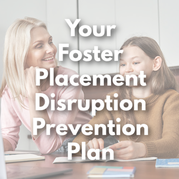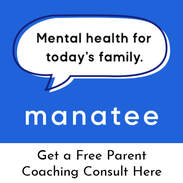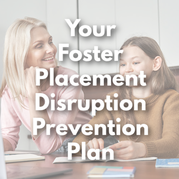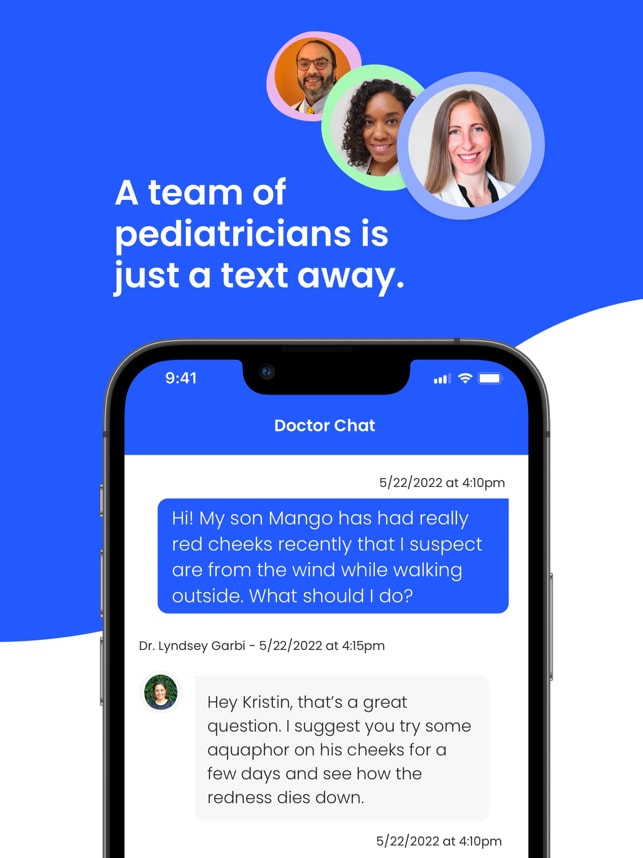|
As foster parents, understanding how our foster children’s brains work can be incredibly helpful and informative. Dr. Mona Delahooke, a leading expert in the field of trauma and development, explains that the brain of a child who has been through trauma is essentially a hyper-sensitive prediction machine. This means that their brain is constantly on alert for potential danger, even when there isn’t any. In this blog post, we will discuss why foster children’s brains work as prediction machines and what we can do to help them develop and process predictions more effectively.
Why Foster Children's Brains Function as Hyper-Sensitive Prediction Machines Foster children often lack the secure attachment relationships with caregivers that are necessary for healthy development and thus may not have access to a secure base from which to explore the world without fear or anxiety. To cope, their brains begin trying to anticipate all potential danger. Their brains end up being hyper-sensitive prediction machines, constantly trying to understand what is happening next and feeling betrayed when it doesn't go as expected. This means that they may exhibit behavior such as hiding or being overly defensive when there isn’t any real threat present. How We Can Help Foster Children Process Predictions More Effectively The good news is that we can help foster children process predictions more effectively. Here's how: 1. First and foremost, work to build attachment. Letting the child know you're someone they can trust will be key to helping them know they don't have to be on heightened alert at all times. While this is critical, unfortunately, this is also the strategy that takes the longest (but the tips below will also help you get here). 2. Validate feelings and show empathy. When a child says "no" to a simple request, recognize this isn't about defiance or a personal attack on you. Your simple request may have made their prediction machine scream "ERROR" which triggered their anxiety and stress and made them feel the need to verbalize a "no". Taking a look at what you may have indirectly been asking them to do or stop doing will help you see it from their view. For example, if they were playing with toys and you asked them to stop and pick up their clothes, they likely said "no" because they were having so much fun with their toys and expected to continue to play without interruption. You could say "I know you're playing with your toys right now and having so much fun. As soon as you're done putting your clothes away, you'll get to continue playing and I know it's going to be awesome when you do." 3. Implement routines. Routines are hugely powerful in making the unfamiliar familiar. The first few weeks with a placement, you should try your best to implement routine into different parts of your family's day. This will help your foster child make predictions with at least a bit of accuracy. 4. Tell them what to expect as often as possible. Since following routines isn't always feasible, explain to them what's coming next. If they can read, during the first month or two, write out what their week will entail. If they can't read, verbally tell them each morning what they can expect. Often in those first few days, they'll still ask you time after time what the plan is even if you've told them; as hard as it is to repeat yourself and as much as it feels like they must not be listening, understand that is their "prediction machine" at work. 5. Give time-based warnings and use timers. For kids as young as 2, timers are an effective way to let them know what to expect and approximately when they can expect it. If a child is having a hard time sharing toys, let them know you'll be setting a timer and when it goes off they have to share (and use it again to demonstrate their next turn with the toy). If they have to stop watching their show to take a shower, tell them you're setting a timer for 10 minutes (and try to give them verbal warnings throughout those 10 minutes). The first few times may be difficult, but kids often catch on quickly, especially with a distinct sound of a timer. 6. Teach them coping skills so they can regulate their own emotions. First, teach your foster child to identify different emotions. Then, teach self-regulation strategies such as deep breathing, progressive muscle relaxation, mindfulness exercises, and listening to a calming song. Model it in your own life often by saying things like "I'm feeling frustrated right now. I think I'm going to take 3 deep breathes to calm down." Foster children's brains often function as prediction machines due to the psychological trauma they have experienced. This can cause them to be overly defensive or anxious even when there is no real threat present since their brains are constantly trying to anticipate danger. Fortunately, foster parents can help foster children process predictions more effectively by providing consistency and structure while also building trust. If you’re a foster parent, you likely already know that sleep can be challenging for a child with trauma. However, there are techniques and strategies you can use to help your child get the rest they need. Let’s take a look at how you can approach sleep "training" for foster kids. Understand the Impact of Trauma on Sleep Habits & Manage Expectations It’s important to understand the ways in which trauma impacts sleep. Children who have experienced trauma may have difficulty falling or staying asleep, or they may wake up multiple times throughout the night. They may also suffer from nightmares or night terrors, leading to further disruption of their sleep cycle. It is essential that foster parents provide an environment that is nurturing and supportive for their children as this allows them to feel safe and secure when sleeping. (This means no "cry it out" for foster kids.) You may want to prepare yourself (and, as needed, your partner) for a newborn-parent sleep pattern the first few weeks after receiving a new foster placement. Establish a Bedtime Routine Creating a consistent bedtime routine can help your foster child relax before bedtime and make it easier for them to drift off to sleep. This could include activities like reading stories together or giving them a warm bath before turning off the lights and getting tucked into bed. Whatever activities you decide on, make sure to keep them consistent each night so that your foster child knows what to expect when it’s time for them to go to bed. Help Them Feel Comfortable in Their Room During the Day It's unlikely a child (with or without trauma) will feel comfortable alone in their room at night if they don't even feel comfortable being alone in their room during the day. After you've begun establishing attachment with your foster child, play together in their room; then, let them know you're going to leave the room to get a drink of water or get something else and you'll be right back. They may need to be reassured and encouraged to continue playing, especially the first few times. Then leave and come back fairly quickly. Do this day-after-day extending the amount time you're gone by a minute each time. This is also a good attachment-building exercise because it lets them know even when you're gone, they can know you're coming back soon. Teach Coping Strategies If your child experiences difficulties getting or staying asleep, it’s important to help them develop coping strategies so they can manage their symptoms during these episodes. For example, teach your child relaxation techniques such as deep breathing or progressive muscle relaxation so they can use them when they feel overwhelmed at night. (For babies and toddlers, you can model deep breathing and massage or compress their arms or legs to encourage relaxation.) For verbal children, you should encourage them to journal or talk about their feelings before starting their bedtime routine; sometimes just articulating their feelings can provide some relief from stressful situations and help them get to sleep easier. Teach Affirmations or Reassuring Mantras My go-to affirmation for my fosters is "You are so safe and loved". I say this to them often, particularly at bedtime and regularly make them say it in first person ("I am so safe and loved"). After a month or so of being with us, they often begin to say it themselves without my prompt. Once they have this down, I let them know, if they're scared or feeling lonely at night, they should say this to themselves while they calm down. Get Help Just as parents of a newborn often ask for help after they bring a baby home, you may want to reach out to your village to see who can provide support. Can someone watch the child so you can get some rest during the day once every few weeks? If you have a partner, can you alternate night shifts so that it doesn't all fall to one person? Remember, you need sleep to be the best foster parent possible, so don't push yourself more than you need to. Talk to Their Doctor Your foster's first medical appointments may not have provided a clear picture on all of their medical needs. If your foster child is still significantly struggling to get and stay asleep after a few months, talk to their doctor and determine if any additional testing or support is needed. Helping your foster child create a healthy sleep pattern requires patience and understanding. Establishing routines, providing emotional support, and teaching coping strategies can help ensure that our kids get enough rest each night so they have the opportunity to be calm and happy kids during the day. With consistent effort, better sleeping habits can soon become second nature! More from FosterMama
How to Handle Reactive Attachment Disorder and Oppositional Defiant Disorder in Foster Children12/3/2022 Are you a foster parent trying to navigate a new diagnosis for your foster child? Whether that diagnosis is Reactive Attachment Disorder (RAD) or Oppositional Defiant Disorder (ODD), it can be hard to know where to start. Let’s break down the basics of these diagnoses, how they may manifest in your foster child, and what you can do as a foster parent to support them through this difficult time.
Understanding Reactive Attachment Disorder Reactive Attachment Disorder occurs when a child has not formed secure attachments with primary caregivers throughout their early development stages. This disorder manifests itself through difficulty forming relationships with adults, persistent sadness or withdrawal, difficulty regulating emotions, and difficulty expressing emotions appropriately. It can also present itself as aggressive behavior towards peers or adults. Understanding Oppositional Defiant Disorder Oppositional Defiant Disorder occurs when a child displays negative behaviors such as arguing with adults, being easily annoyed, blaming others for their own misbehavior, and having an overall negative attitude towards authority figures. A child with ODD may demonstrate frequent outbursts of anger or defiance when asked to do something they do not want to do. They may also have trouble understanding consequences for misbehavior or refusing to comply with rules set by adults. Supporting Your Foster Child
Handling a foster child diagnosed with Reactive Attachment Disorder or Oppositional Defiant Disorder can be challenging. By maintaining patience and consistency while setting clear expectations and providing ample opportunities for positive reinforcement, you can create an environment which allows your foster children the opportunity to thrive. With proper guidance, patience and understanding from a caring adult figure like yourself, your foster children will have the best possible chance at succeeding despite any obstacles they may face due to their diagnoses! (This blog contains affiliate/referral links.) If you’re a new foster parent, or considering becoming one, it can be helpful to know the possible behaviors that you may encounter. While each foster child is unique and will have their own perspectives and experiences, all foster kids have experienced the trauma of being separated from their biological family. It is important to remember that many of these behaviors are rooted in this and other trauma. Common Behaviors in Foster Children When caring for a foster child, there are some common behaviors you may notice. These behaviors may manifest differently based on the individual child’s age or level of maturity. Many of these behaviors are normal reactions to trauma; some of which include:
These behaviors in foster children are often rooted in attachment and trust issues. It's likely that your foster child will need lots of reassurance from you that they can trust you and rely on your support before they begin to connect with you. Remember, a child won't follow your directions just because you put a meal on the table and roof over their head; they first need to build trust and a bond with you. Trust Based Relational Intervention (TBRI) is the gold-standard for building attachment with kids from hard places. Learn the TBRI IDEAL Response to deal with these tough behaviors. Behavioral Issues That Need Professional Attention While arguably all foster children could benefit from therapy in some form, there are some behavioral issues that likely need more intense support. These include:
While caring for foster children can be challenging at times due to these behaviors, it can also be incredibly rewarding knowing that you are providing them with a safe environment where they can grow. As a foster parent, it is important to understand what typical behaviors may look like so that if any problems arise, you know how best to proceed with getting professional help for your foster child’s well-being. If you are fostering a toddler, there are some key behaviors that you should understand and expect as they adjust to their new home. Learning how to differentiate between normal toddler behavior and potentially more serious issues can help make sure your foster child gets the support they need.
Understanding Age Appropriate Behaviors A good starting point for understanding typical toddler behavior is to understand what is considered age appropriate development for toddlers. Generally, toddlers aged one to three years old have a limited vocabulary and may communicate primarily through gestures and body language. At this age, children also have very limited self-control and often act impulsively or out of anger or frustration when their needs aren't met. It's important for foster parents to remember that tantrums and emotional outbursts are normal expressions of emotions at this stage of development. Differentiating Between Normal Behavior & Trauma Triggers In addition to normal toddler behaviors, it's important for foster parents to be aware that children in the foster care system have experienced trauma which may manifest itself in certain behaviors or reactions. For example, if your child experiences an unexplained fear or anxiety when separated from caregivers, it could be due to past trauma associated with separation from primary caregivers. Similarly, if your child displays signs of aggression towards other children or adults, it could be indicative of unresolved trauma or feelings of helplessness. It's important for foster parents to recognize potential triggers like these right away so that they can take steps to provide appropriate support and resources as needed. Coping Skills & Self Regulation Techniques One way that foster parents can help their children cope with challenging emotions is by teaching them coping skills such as deep breathing exercises or positive self-talk techniques. These types of activities can help kids learn how to self-regulate their emotions in difficult situations and give them the tools they need to better manage stressors related to their past trauma. Additionally, providing a consistent daily routine with regular mealtimes, bedtimes, playtime, etc., can help create structure and predictability which is especially beneficial for children who have experienced traumatic events in the past. Seek Professional Help As Needed Though they're young, even toddlers may benefit from professional help like behavioral therapies, play therapy or floor time therapy. Additionally, if young children are severely struggling, you should have them evaluated for other services; speech therapy, occupational therapy or physical therapy may help them reduce physical frustrations and allows them the opportunity to thrive in other areas. There are also many resources available to help foster parents learn tactics and skills to parent a child who is struggling, including parent coaching with a licensed therapist. Get a free parent coaching consult with Manatee here. While there may be some unique challenges associated with fostering a toddler in care, it’s important for foster parents not forget about all the wonderful aspects of parenting a young child too! With love, patience, understanding and access to appropriate resources, foster parenting a toddler can be an incredibly rewarding experience! Keeping these things in mind while navigating typical toddler behaviors during this transition period will ensure your new family member gets off on the right foot during their time with you. |
AuthorI'm a foster mom, bio mom, working mom, special needs mom, busy mom. I'm also married to my high school sweetheart, I'm a proud 23-year childhood cancer survivor, and I'm passionate about serving my community. More from FosterMamaArchives
March 2023
Categories
All
|





 RSS Feed
RSS Feed